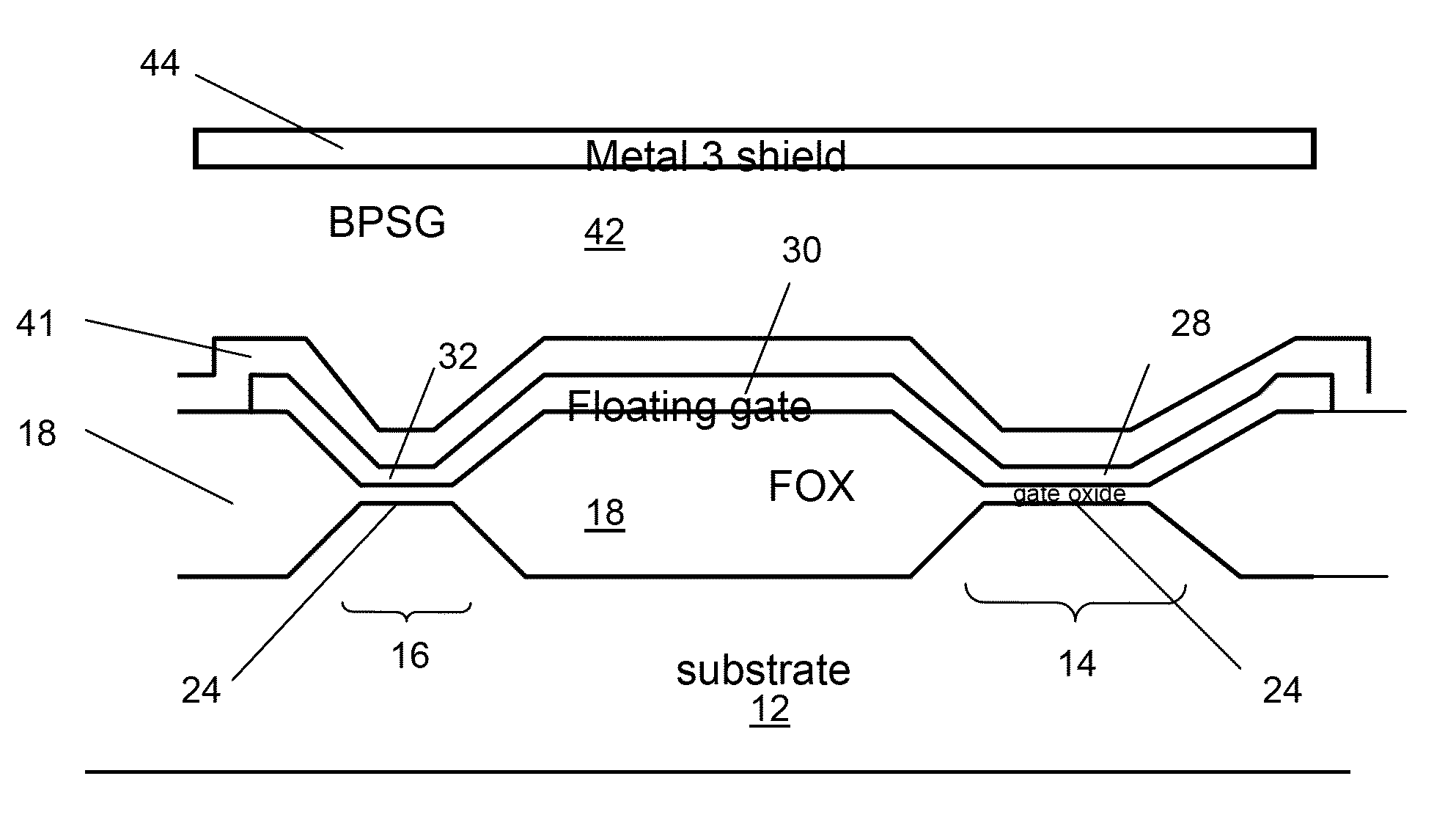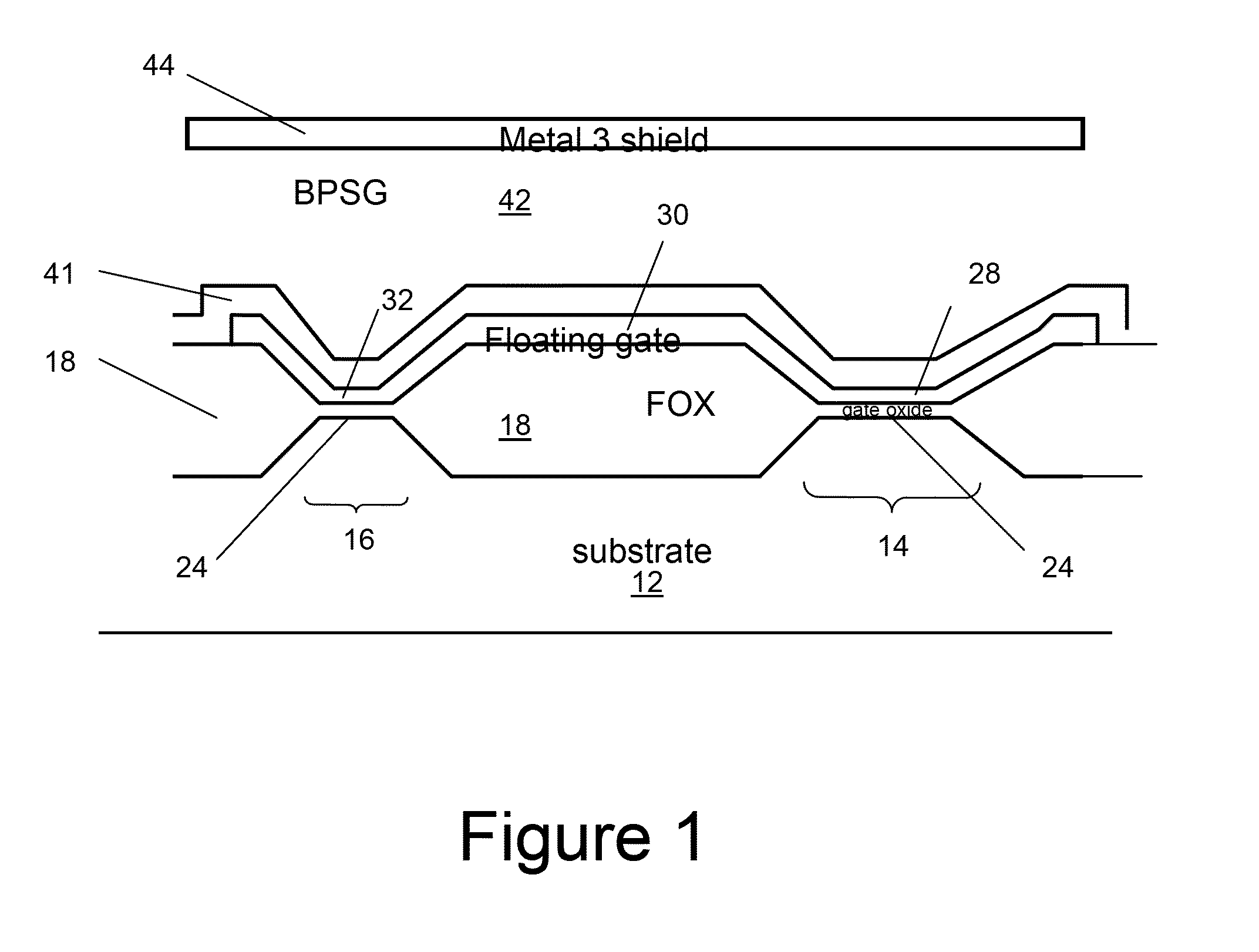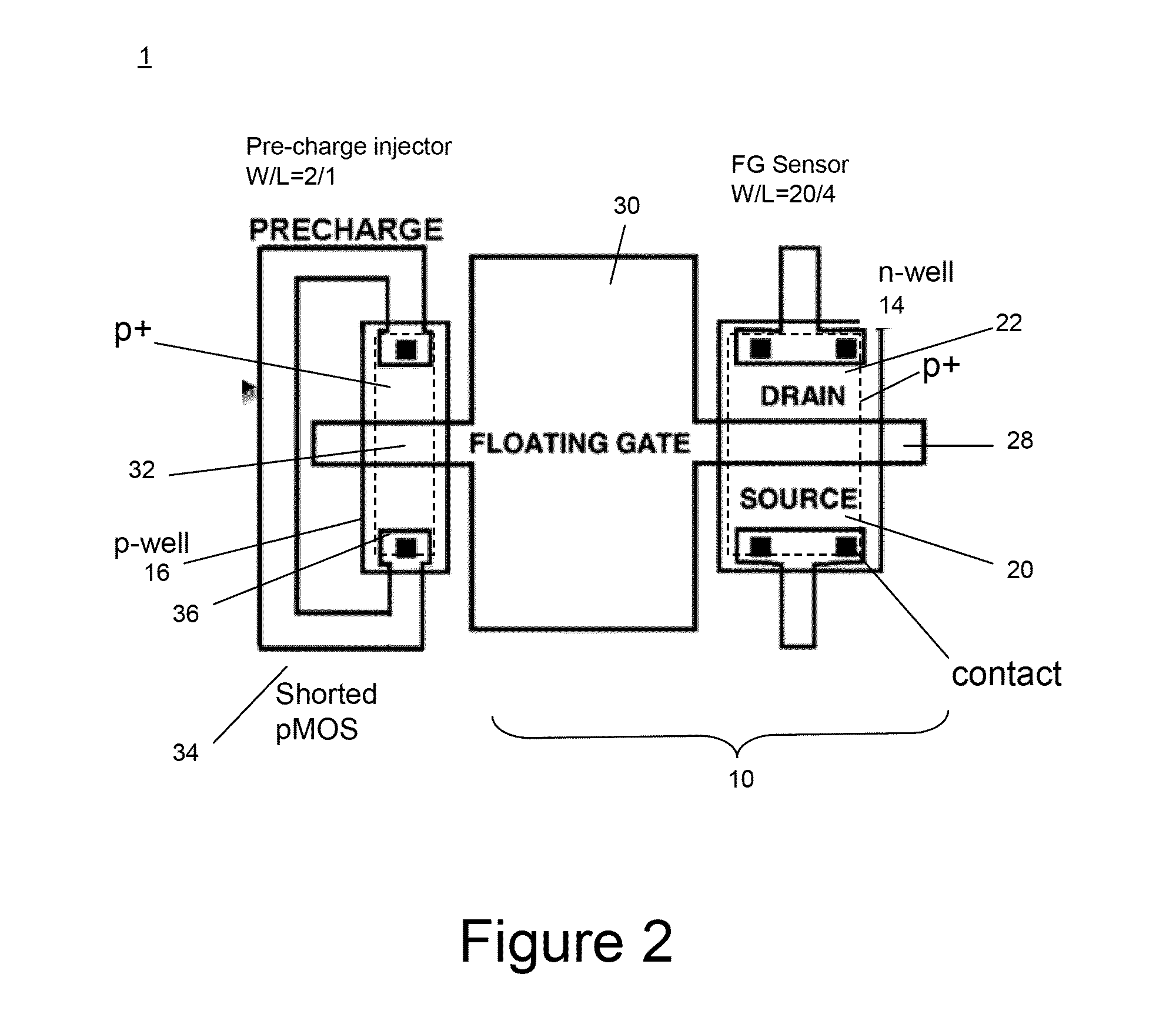Miniaturized, low power fgmosfet radiation sensor and wireless dosimeter system
a radiation sensor and wireless technology, applied in the field of low-power fgmosfet radiation sensors and dosimeters, can solve the problems of increasing sensitivity and reducing capacitan
- Summary
- Abstract
- Description
- Claims
- Application Information
AI Technical Summary
Benefits of technology
Problems solved by technology
Method used
Image
Examples
first embodiment
[0043]A radiation sensor 1 comprising a FGMOSFET 10 according to the present invention is shown schematically in cross-section in FIG. 1. A top view of part of the layout is shown in FIG. 2. The exemplary device structure 1 may be fabricated using a standard 0.8 μm CMOS process (DALSA) with a single polysilicon layer. The FGMOSFET comprises a p-channel device fabricated on a silicon substrate 12, in which a first device well region (n-well) 14 and a second device well region (p-well) 16 are defined, separated by field oxide regions (FOX) 18. As shown in FIG. 2, source 20, drain 22 and channel 24 regions of the sensor FGMOSFET 10 are defined in the substrate in the first device well 14. A standard thickness gate oxide layer 24 is provided over the channel region and a floating gate 28 is formed thereon, comprising a polysilicon layer (Poly 1). The floating gate 28 also comprises a larger area extension 30, provided by the first polysilicon layer, which extends over the field oxide la...
third embodiment
[0050]A sensor, is shown in FIG. 6, which shows A) a photomicrograph and B) a schematic layout of a radiation sensor comprising a FGMOSFET pair that are similar to those shown in FIG. 4, but wherein the sources, drains and gates, other than the large area floating gate extension 30, of the sensor and reference FGMOSFETS, comprise an interdigitated structure 70 to more effectively neutralize gradient effects and temperature variations across the chip. Each has a charging structure or charge injector 34, as described above. This embodiment provides for improved matching of component values to compensate for environmental and process variations, particularly for differential operation. The design provided improved accuracy, precision and a lower resolvable radiation sensitivity, because common mode variation was filtered out more effectively and improves signal to noise ratio. However, sensitivity was observed to be slightly reduced relative to the embodiment shown in FIGS. 4 and 5.
fourth embodiment
[0051]A sensor, is shown in FIG. 6 which shows A) a photomicrograph and B) a schematic layout of a FGMOSFET sensor comprising two pairs of sensor and reference FGMOSFETs 10a / 50a and 10b / 50b connected in parallel. Stacking of multiple sensors improves the sensitivity linearly with the number of stacked units. For example, the device shown in FIG. 6 with two sensor / reference FGMOSFET pairs in parallel, had an effective sensitivity of 15.1 nA / rad (3 mV / rad) compared with 7.75 nA / rad (1.5 mV / rad) for a single sensor / reference FGMOSFET pair shown in FIGS. 4 and 5. At the same time, 1 / f noise of the individual units will accumulate, which increases the minimum level of resolvable dose.
[0052]In addition to radiation sensitivity, i.e. change in threshold voltage Vt relative to the radiation dose in rads, measured in mV / rad, other important RADFET parameters are long term-fading and endurance, read-time stability, flicker (1 / f) noise and resolution. In the embodiments described herein, flic...
PUM
 Login to View More
Login to View More Abstract
Description
Claims
Application Information
 Login to View More
Login to View More - R&D
- Intellectual Property
- Life Sciences
- Materials
- Tech Scout
- Unparalleled Data Quality
- Higher Quality Content
- 60% Fewer Hallucinations
Browse by: Latest US Patents, China's latest patents, Technical Efficacy Thesaurus, Application Domain, Technology Topic, Popular Technical Reports.
© 2025 PatSnap. All rights reserved.Legal|Privacy policy|Modern Slavery Act Transparency Statement|Sitemap|About US| Contact US: help@patsnap.com



